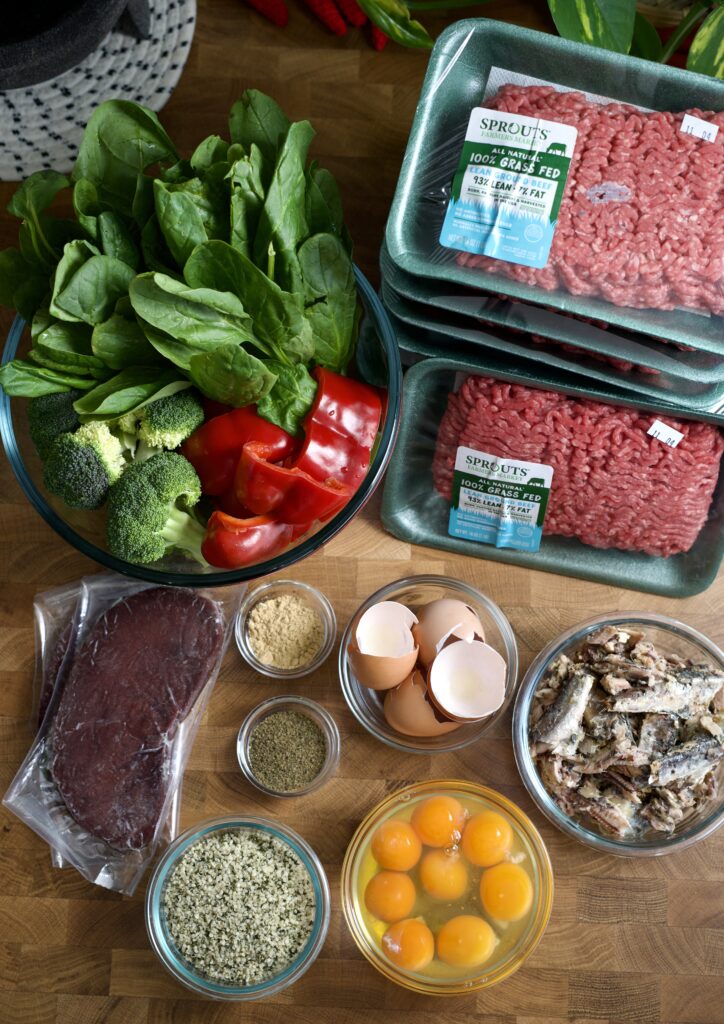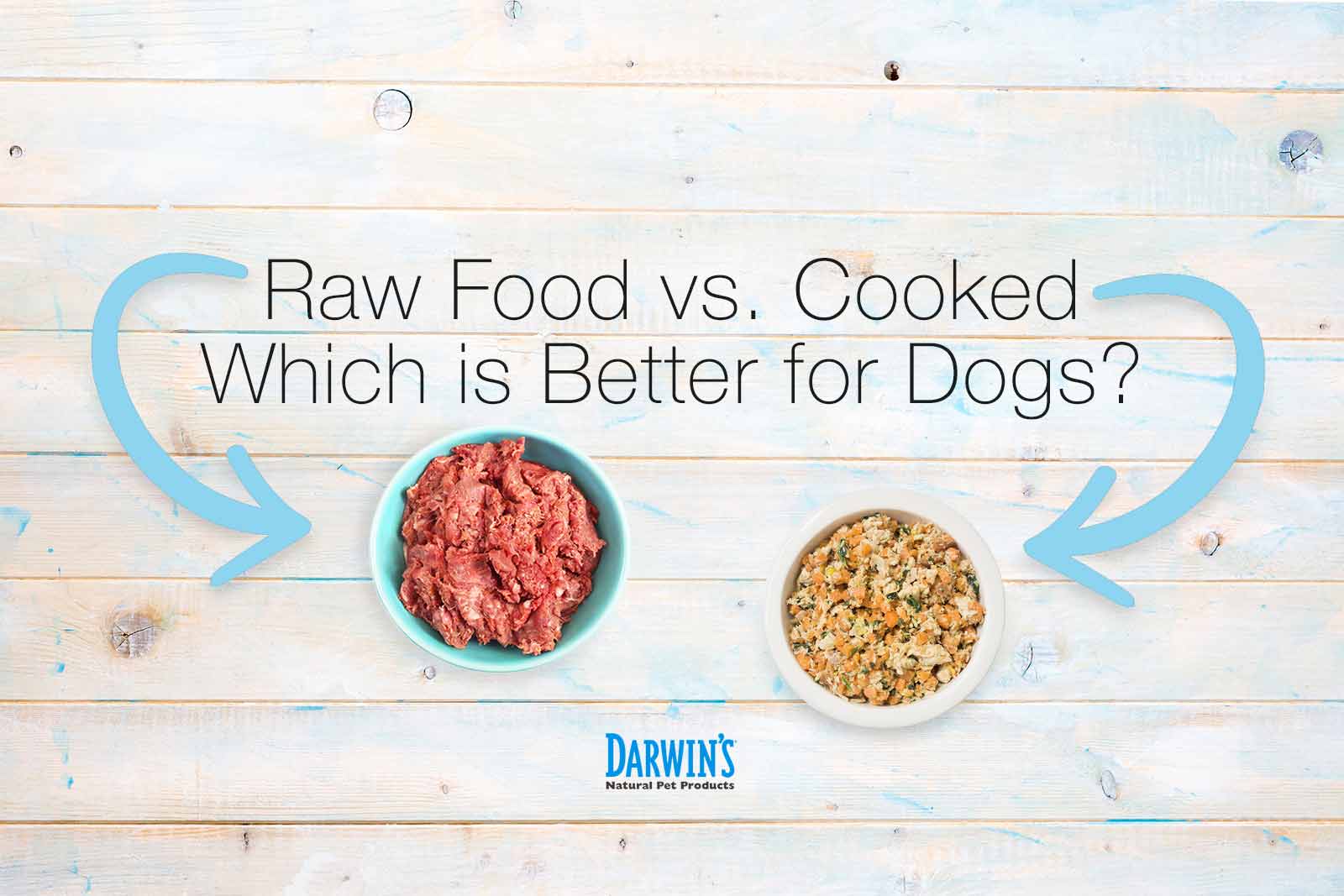Cooking raw food for dogs involves balancing proteins, fats, and carbohydrates. It’s essential to ensure meals are nutritionally complete.
Transitioning to a raw food diet for dogs is gaining popularity among pet owners who seek a more natural feeding option for their furry friends. This approach typically includes raw meat, bones, fruits, and vegetables, aiming to mimic a canine’s ancestral diet.
Embracing this diet can improve vitality, healthier skin and coat, and better dental health for dogs. However, it’s crucial to understand the basics of proper preparation and the importance of a balanced diet to avoid nutritional deficiencies. Careful consideration and consultation with a veterinarian can help tailor a raw diet that supports your dog’s health and well-being.
The Raw Food Movement For Dogs
Many dog owners today are exploring the raw food diet, which mimics a canine’s natural ancestral menu. This diet often includes raw meat, bones, fruits, and vegetables. This approach to feeding is gaining popularity.
Benefits Of Raw Diets
- Improved Digestion: Raw food is easy for dogs to break down. This means better nutrient absorption.
- Healthier Skin and Coat: Natural oils in raw diets contribute to a shiny coat. They also make the skin less prone to issues.
- More Energy: Dogs on raw diets may show higher energy levels. This is due to more efficient food use.
- Dental Health: Chewing raw bones can help keep teeth clean. It also strengthens the jaw muscles.
- Weight Management: A raw diet is high in protein and low in carbs. This helps maintain a healthy weight.
Common Misconceptions
Some people believe raw diets are unsafe. This is not always true. Proper handling and sourcing can mitigate risks.
| Misconception | Fact |
|---|---|
| Too Expensive | Raw feeding can be cost-effective with smart shopping. |
| Time-Consuming | Meal prep can be quick once in a routine. It’s similar to cooking for the family. |
| Risk of Bacteria | Good hygiene practices reduce this risk. It’s like handling meat for human consumption. |
| Unbalanced Diet | Consulting with a vet can ensure a balanced meal plan for your dog. |
It’s important to research and consult a vet. This way, you can safely switch to a raw diet.
Raw Diet Essentials
Embracing a raw diet for dogs brings us back to their ancestral eating habits. It’s a commitment to provide meals that mimic what canines ate before domestication. Let’s explore the ‘Raw Diet Essentials’ for a healthy, happy pup.
Key Ingredients
Creating the perfect raw meal for your dog starts with the right components. Focus on quality and variety. Here’s a breakdown of the must-have ingredients:
- Lean meats: These are the main source of protein. Think beef, chicken, lamb, or turkey.
- Organs: Rich in nutrients, organs like the liver and kidneys are vital.
- Bones: Ground or whole bones provide calcium and phosphorus.
- Fruits and veggies: They add fiber and vitamins. Use spinach, apples, or carrots.
- Fats: Essential fatty acids come from oils and fatty meats.
- Supplements: Sometimes, dogs need a little extra. Add kelp or probiotics as needed.
Balancing Macronutrients
A well-rounded raw diet for dogs must have the right mix of proteins, fats, and carbohydrates. Balance is key to health.
| Nutrient | Role | Recommended Amount |
|---|---|---|
| Protein | Builds muscle | 40-60% |
| Fat | Provides energy | 20-30% |
| Carbohydrates | Supplies fiber | 5-15% |
Measure these macronutrients in every meal. Adjust according to your dog’s age, weight, and activity level. A healthy balance ensures your dog thrives on a raw diet.
Getting Started With Raw Food
Diving into the world of
can bring many benefits. This natural approach to feeding can lead to better health and more energy. Before switching, knowing the basics and preparing for a smooth transition is important.
Transitioning Your Dog
Switching your dog to a raw food diet should be gradual. A sudden change may upset their stomach. Start by mixing raw food with their current diet. Increase the raw portion over time.
- Day 1-3: 25% raw, 75% current diet
- Day 4-6: 50% raw, 50% current diet
- Day 7-9: 75% raw, 25% current diet
- Day 10: 100% raw diet
Portion Sizes And Frequency
Proper portion sizes are crucial. They depend on your dog’s weight, age, and activity level. Dogs usually eat 2-3% of their body weight in raw food daily. Puppies may need more.
| Weight (lbs) | Food (lbs/day) |
|---|---|
| 10 | 0.2-0.3 |
| 50 | 1-1.5 |
| 100 | 2-3 |
Feed adult dogs twice daily. Puppies may need three to four meals. Adjust as needed for weight and health.
Simple Raw Food Recipes
Feeding your dog a raw food diet may seem daunting. Yet, simple recipes exist that ensure your furry friend gets all the nutrients they need. Let’s delve into easy-to-make raw meals that keep tails wagging!
Basic Meaty Meals
Starting with the basics, raw meaty meals provide the foundation for a dog’s diet. The key is variety and balance over time. Here’s a beginner-friendly recipe:
- Choose a protein: Beef, chicken, or lamb.
- Add organ meat: Include a small portion of the liver or kidney.
- Mix in bone: Ground or small, soft bones for calcium.
| Ingredient | Amount |
|---|---|
| Protein (e.g., beef) | 80% |
| Organ meat | 10% |
| Bone | 10% |
Organ Mixtures
Organ meats are nutrient-dense and vital to your dog’s health. A balanced organ mixture can include:
- Liver (rich in vitamin A)
- Kidneys (packed with vitamins)
- Heart (excellent protein source)
For a simple organ blend:
- Chop the organs into small pieces.
- Mix them together in equal parts.
- Freeze in portions so it’s ready to serve.
This mixture can make up to 10% of your dog’s meal, providing essential nutrients for their well-being.
Adding Variety To The Menu
Feeding your dog raw food keeps them happy and healthy. But sticking to one type of food can get boring for your furry friend. Let’s spice up their meal plans!
Rotating Proteins
Varying protein sources are vital for a balanced diet. It prevents allergies and boosts overall health. Try these proteins each week:
- Beef
- Chicken
- Lamb
- Turkey
- Fish
This rotation ensures your dog gets different nutrients all the time.
Incorporating Fruits And Veggies
Fruits and veggies are great for your dog’s diet. They provide vitamins and fiber. Here’s how to mix them into meals:
| Fruit/Veggie | Benefits |
|---|---|
| Carrots | Improves vision |
| Blueberries | Antioxidants |
| Spinach | Iron |
| Pumpkin | Digestive Health |
Start with small amounts to see what they like!

Credit: stellanspice.com
Supplements For A Balanced Diet
Supplements ensure a balanced diet when feeding your dog a raw food diet. This is crucial for their health and energy levels. Let’s explore the essential supplements.
Essential Vitamins And Minerals
Dogs need various vitamins and minerals to thrive. A raw diet might not provide all of them, so it’s important to know what to add.
- Vitamin A is beneficial to the eyes and skin.
- Vitamin D – is important for bone health.
- Calcium: essential for healthy bones and teeth.
- Iron – keeps the blood healthy.
These can come from supplements or natural foods like carrots for Vitamin A and dairy for Calcium.
Natural Additives
Natural additives can boost your dog’s diet. They make meals better and healthier.
| Supplement | Benefits |
|---|---|
| Fish oil | Great for coat and skin health. |
| Probiotics | Help with digestion. |
| Pumpkin | Good for digestion. |
Adding these can make a big difference to your pet’s health. Always choose high-quality sources.
Safe Food Handling And Storage
Preparing raw food for dogs requires careful attention to hygiene. Proper handling and storage are crucial. They keep meals safe and nutritious. Let’s explore ways to prevent contamination and maintain freshness in your dog’s diet.
Avoiding Contamination
Raw food for dogs can harbor bacteria, so it’s vital to avoid contamination. For meat and veggies, use different chopping boards. Hands should always be completely cleaned both before and after handling raw food. Clean all utensils and surfaces immediately. Use hot, soapy water for the best results.
- Wash hands for at least 20 seconds.
- Clean surfaces before and after food prep.
- Separate meat from other foods.
When prepping dog food, wear gloves. Change them often to prevent cross-contamination. Keep raw food away from other food items in your kitchen.
Proper Refrigeration Techniques
Proper storage of raw dog food is key to freshness. Refrigerate or freeze it right after purchase. Keep it at safe temperatures to slow bacterial growth. Your refrigerator should be at 40°F or below, and your freezer should be at 0°F.
| Storage Location | Temperature | Storage Time |
|---|---|---|
| Refrigerator | 40°F or below | 1-2 days |
| Freezer | 0°F | Up to 3 months |
Use airtight containers to store raw dog food. Label each container with the date. This helps track freshness. Thaw frozen food in the refrigerator, not at room temperature. This keeps it safe from bacteria that can cause illness.
- Store in airtight containers.
- Label with preparation date.
- Thaw in the refrigerator.
Troubleshooting Common Issues
Many pet owners embrace the benefits of raw food diets for their dogs. But sometimes, they face challenges. Let’s explore common issues and find solutions to keep tails wagging.
Dealing With Picky Eaters
Dogs can be fussy about food changes. Patience and persistence are key. Try these tips:
- Mix it up: Combine raw food with their current favorites. Gradually increase the raw portion.
- Temperature matters: Some dogs prefer chilled or room-temperature meals. Experiment to find their preference.
- Keep it fresh: Freshness can affect flavor. Ensure raw meals are freshly prepared.
Monitoring Health And Allergies
Health checks are crucial when feeding dogs raw food. Watch for signs of allergies or discomfort. Steps to monitor effectively:
- Regular vet visits: Keep up with check-ups. Discuss dietary impacts with your vet.
- Keep a food diary: Note what you feed your dog. Record any reactions or changes.
- Introduce new foods slowly. Give your dog time to adjust. Add one new component at a time.
| Signs to Watch For | Action Steps |
|---|---|
| Skin irritation | Consult your vet |
| Upset stomach | Review the food diary |
| Lethargy | Adjust the diet |
Community And Support

Community and support play a crucial role in your journey through raw feeding your dog. It’s not just about choosing the right ingredients. It’s also about connecting with others on the same path. This network of support can provide insightful information and motivation. Below, explore how to engage with fellow raw feeders and find professional advice.
Connecting With Other Raw Feeders
Joining a community of raw feeders can be a game-changer. Here are some ways to connect:
- Online forums: Share experiences and get tips.
- Social media groups: Find local and global communities.
- Meet-ups: Attend events to learn and socialize.
These connections can help you feel less alone in your raw feeding journey.
Professional Advice And Resources
Seeking expert guidance ensures your dog’s diet is balanced and nutritious. Consider these resources:
| Resource | Benefits |
|---|---|
| Veterinary nutritionists | Personalized diet plans for your dog |
| Books and guides | Detailed information on raw feeding |
| Online courses | Structured learning at your own pace |
Remember, expert advice can help prevent nutritional imbalances.
Credit: m.youtube.com

Credit: www.darwinspet.com
Cooking Raw Food for Dogs
Deciding whether to cook raw dog food involves weighing the benefits and risks. Cooking raw dog food can eliminate harmful pathogens like Salmonella and E. coli, reducing the risk of foodborne illnesses for dogs and humans.
It can also make certain nutrients more digestible and enhance the flavor, potentially making the food more appealing to picky eaters. However, cooking may degrade some essential nutrients, such as vitamins and amino acids, which raw feeding advocates believe are crucial for a dog’s health.
Additionally, the cooking process can alter the food’s natural enzymes that aid digestion. Ultimately, the decision depends on the individual dog’s health needs and the owner’s ability to safely handle and prepare raw food.
Consulting a veterinarian or a pet nutritionist can provide personalized guidance, ensuring the dog receives a balanced and safe, raw or cooked diet.
Frequently Asked Questions
How To Cook A Raw Food Diet For Dogs?
Answer: Consult a vet for a balanced diet plan. Choose fresh, high-quality proteins, vegetables, and fruits. Cook meat to kill pathogens. Blend raw veggies for easy digestion. Serve portion sizes based on your dog’s weight and activity level.
Should You Cook Raw Meat For Dogs?
Answer: Cooking raw meat for dogs is not mandatory, as many canines thrive on a properly prepared raw diet. However, cooking can eliminate pathogens and make digestion easier for some pets. Always consult your vet to tailor your dog’s diet to their needs.
How Should Raw Food Be Feefed to Dogs?
Answer: Choose balanced raw meals designed for dogs. Gradually introduce raw food, monitoring your pet’s health. Serve appropriate portions based on your dog’s weight and activity level. Always handle raw food with hygiene in mind to prevent contamination. Consult a vet for personalized feeding advice.
Is It Better To Boil Or Bake Meat For Dogs?
Answer: Boiling meat is generally better for dogs as it reduces the risk of harmful additives and preserves more nutrients than baking.
Conclusion
Preparing raw meals for your canine companions can be a rewarding endeavor. It nurtures their health and caters to their instinctual preferences. Consult a vet to tailor the diet to your dog’s needs. Embrace the journey of providing fresh, wholesome nutrition that can lead to a happier, more vibrant pet.

I’m a Canada, UAE, US, and UK-based writer and dog expert blogger. I spent over five years learning about dog food and grooming techniques. Additionally, I recommend avoiding and properly treating various physical problems in dogs. I am here to share my knowledge about good dog nutrition and care.

